The dying art of melipona beekeeping in Mexico
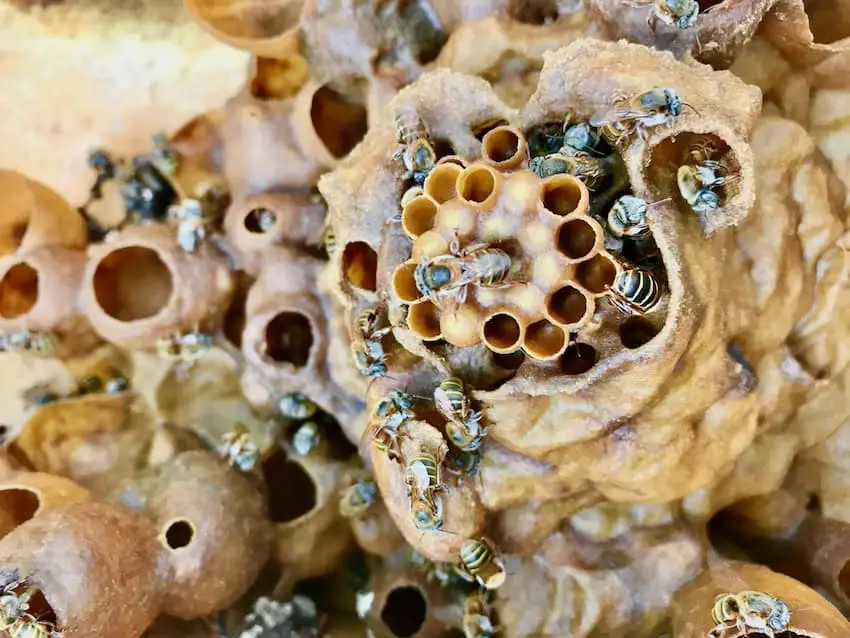
Okay, I’m geeking out hard right now. Why? Because I think I’ve fallen in love. I am learning about my local stingless bees and stingless bee honey. Are stingless bees real? Yes, stingless bees are real. Of the 46 species in Mexico, 16 are found in Yucatán, where I live. Isn’t that amazing? Melipona beekeeping is a way of life here and the history of the craft goes back centuries.
“Yucatán is one of the most biodiverse stingless bee areas worldwide.” Russell, the beekeeper at the Mayan Bee Sanctuary, told me. This has opened up a whole new world for me. It is a fascinating world of healing jungle honey with potent medicinal properties. And melipona honey is used for beauty treatments too.
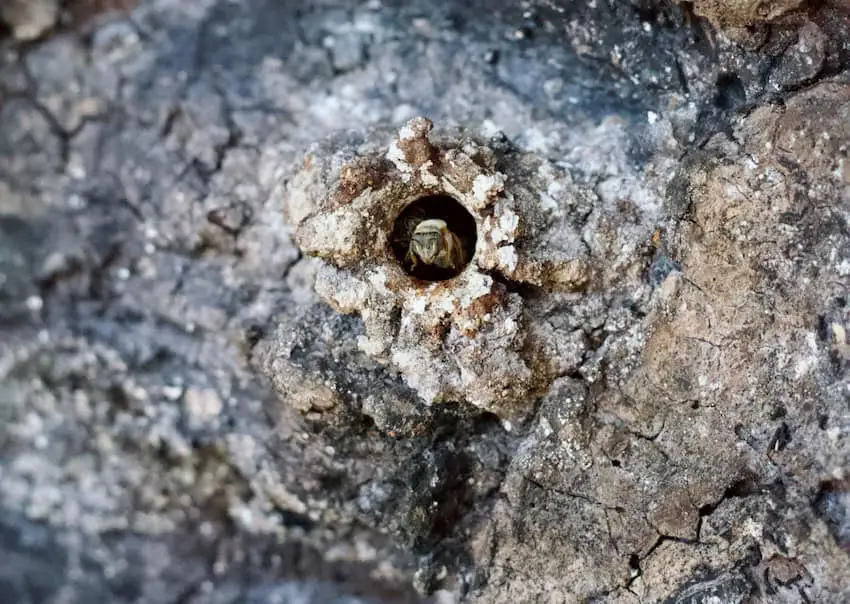
This is all thanks to the small but mighty Melipona. Or should I say, the Royal Lady Bee, named after her namesake, Xunan Kab — the Mayan goddess of Meliponas, bees, and honey. See why my inner nature nerd is loving this little bee?
Why do I want a hive?
Talking with Russell, the head beekeeper at the Mayan Bee Sanctuary, and learning about the tiny but mighty Melipona beechii’s race against extinction stole my heart. Plus, they are very relaxed, docile, and stingless. This means no harm to myself or my pets, so it’s about as perfect as it gets, in my eyes.
Something you should know about me — I’m a culture vulture, a nature nerd, and a Batty Botanist. I love learning about the environment around me. Ever since moving to the Riviera Maya seven years ago, I’ve been fascinated with Mayan culture. But learning about the special relationship between Maya and Melipona is hands down my favorite thing so far.
My other big loves are natural history, conservation, and preservation of native flora and fauna. So, learning about the history of meliponas in the region is delightful. I’m also passionate about natural treatments and holistic living harmoniously within an environment. A passion that the ancient Mayans and their modern-day descendants share.
That’s why I want a hive, or two, or three. Meliponas are the perfect starter bee for this budding beekeeper!
Are Melipona bees endangered?
Yes, their numbers are dwindling at an alarming rate. Back at the height of the Mayan Empire, there was evidence of beekeeping with thousands of hives. The Maya, it’s estimated, kept as many as 2,000 hives each at the time. Nowadays, most beekeepers keep less than a dozen hives.
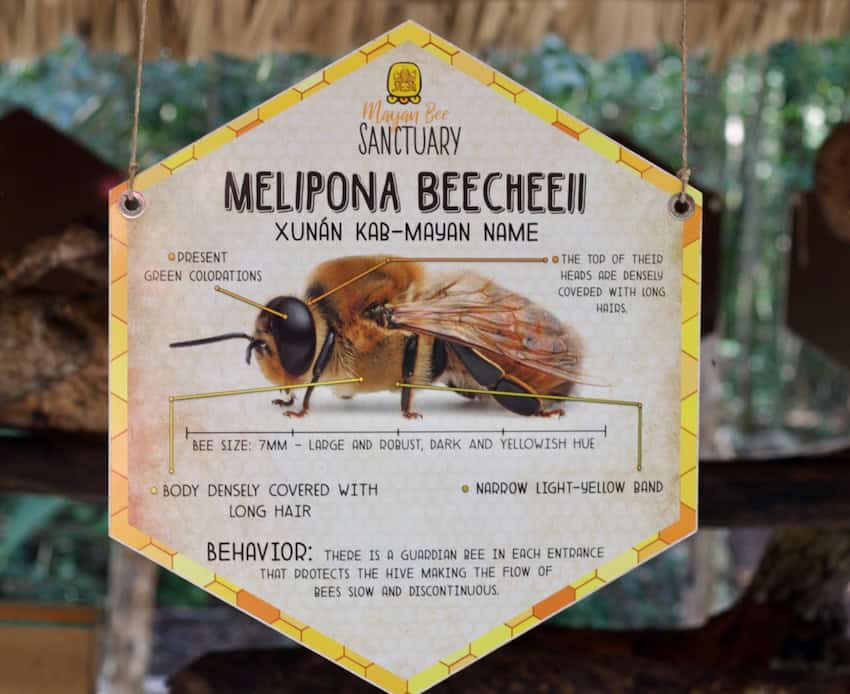

Because these little bees only produce a couple of liters of honey annually. In comparison, the European honey bee produces up to 30 liters. So, the popularity of the Apis bee species in Mexico has swung in favor of the greater producers.
There is a big difference in the honey as well. Mayans have been using this concentrated jungle honey as medicine for thousands of years. That’s another great reason I want a hive. And to learn how to keep them the Mayan way.
A natural way within the environment so the bees are happiest. Placing the hive in consideration of the cardinal points North, East, South, and West for optimal honey production. Placed correctly, the hives can last decades, if not centuries.
Where do stingless bees live?
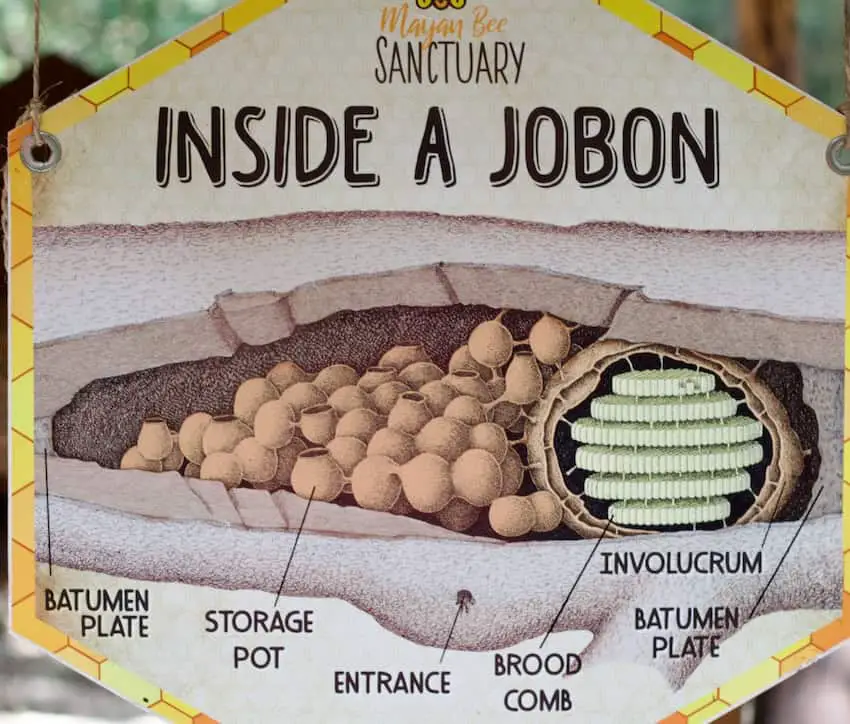

In a hollowed-out log or tree, stingless bees build their hives, called jobon. Russell says “a steady temperature is one of the most essential things when keeping a jobon healthy,” so the wood has to be over an inch thick. But you can also keep them in a box, making harvesting the honey easier.
So natural log jobon for tradition, or a box for convenience? That is the question. Which would you choose? I’m leaning towards a jobon. Because I like the natural look of a log. Plus, I can always use a large syringe to extract the precious healing honey from those fat little pots inside.
Stingless bee honey.
I learnt that for optimal stingless bee honey production you need to create the right environment. Russell kindly shared a guide to keeping meliponas the traditional Mayan way. So far, here’s what I’ve learned.
The most important thing is flowers. Meliponas need tropical flowers. Without them, the hive will perish. Once you have a flower-rich environment, place a hive taking into consideration:
- Location
- Orientation
- Protection
- Roof
- Shelves – Materials and height from the floor for temperature control.
Maya take Meliponas to the next level.
According to the Maya, the cardinal points North, East, West, and South all need to be taken into consideration in locating a hive. Each direction represents something vital to the bees.
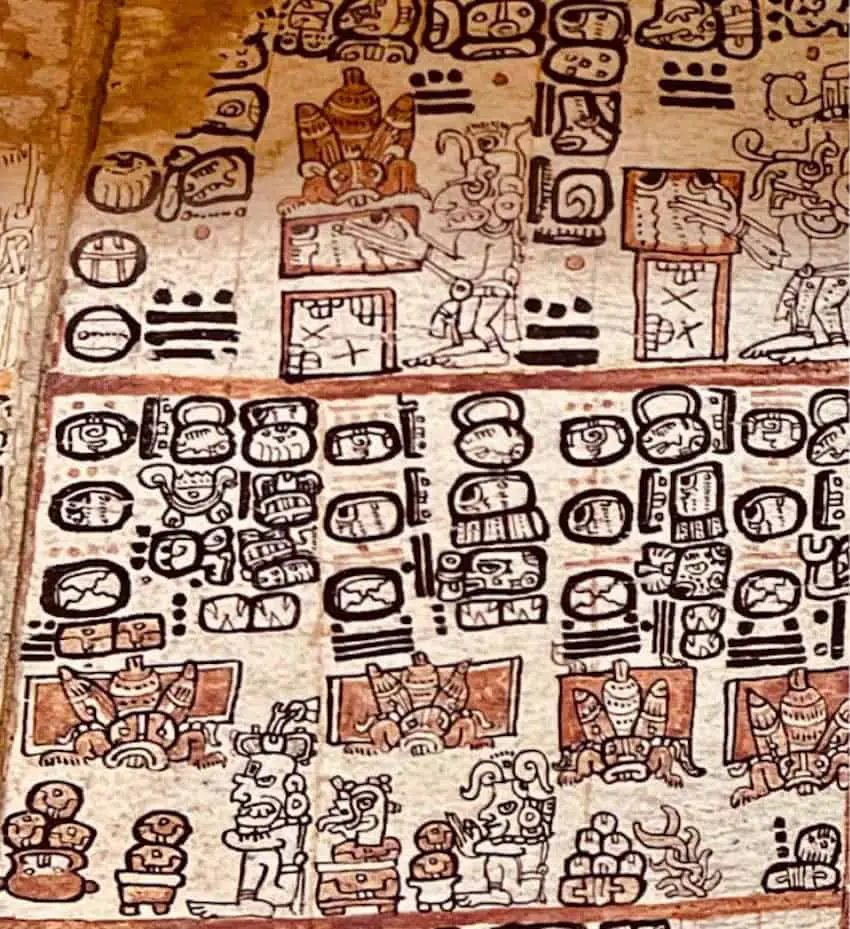

North is the place where the bees went to collect resins.
East is the place where the honey originated;
South was the place where the bees gathered to collect pollen.
And the West indicated the place where the brood comes from.
This idea intrigues me. Thankfully, Russell explained the meanings. To pick the right place it needs shade so they don’t overheat. Thick walls to help them thermoregulate the hive. Lastly, place the entrance facing East, towards the sunrise.
“Facing the sunrise, they will produce more honey. They wake early and leave as the sun rises because they need to see it’s clear before they start work.”
So, when am I getting my hive?
Well, I still need a bit more education first. Russell says “To start keeping these bees you need knowledge.” It is the key to the survival of the hive. So, watch YouTube videos, join groups, talk to beekeepers in other regions or even from other countries.
And that folks, is why I’m geeking out so hard right now. I’ve disappeared down the rabbit hole of Melipona stingless beekeeping. It’s wonderful and I’ll happily be ready to adopt the next hive that needs rescuing. Those magic little Meliponas can come and live with me any day.
Mexico Correspondent for International Living, Bel is an experienced writer, author, photographer and videographer with 500+ articles published both in print and across digital platforms. Living in the Mexican Caribbean for over 7 years now she’s in love with Mexico and has no plans to go anywhere anytime soon.
Source: Mexico News Daily

